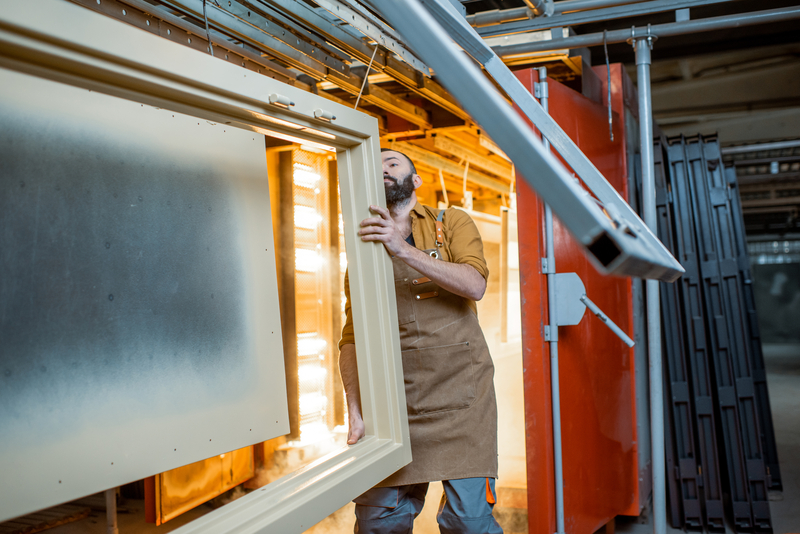Understanding Different Types of Aluminum Extrusion Profiles
Aluminum extrusion profiles are used to enhance the form of different structures. Their proven popularity in a wide range of applications can be attributed to their plasticity and durability. Mostly, the standard options in the market are either fractional or metric. There are different materials used in the manufacture of aluminum extrusion profiles, which determine their properties and quality.
Aluminum profiles come in varying internal voids designed in consideration of different application requirements. So, what are the different types of aluminum profiles? Read on!
Aluminum Extrusion Profiles Geometric Characteristics
The properties of aluminum extrusion profiles determine their application. Some of them are:
Groove dimension: the main function of the groove of an extrusion is anchoring the panels. The groove dimensions are proportional to the modular dimensions.
Modular dimension: these are grooves on the sides of square extrusion profiles
Bore diameter: This geometric characteristic allows for fastening or tapping the thread.

Common Types of Aluminum Extrusion Profiles
Hollow Beam
This basic profile is commonly used in construction applications. As the name implies, they have a hollow form without intricate cross-sections. You can get these profiles in varying characteristics based on the intended role in your building or industrial project. Their proven popularity in the construction industry can be attributed to their outstanding horizontal support for bulky loads.
Square Profile
Square profiles have common applications with hollow beams. They are available in non-seamless and seamless options and are ideal for applications that require structural support unachievable with the hollow beam. Common roles of square profiles are load bearings, columns, and pillars.
The production process of this type is fairly easy. The aluminum sheet is flattened and joined into a square form. This process can be non-seamless or seamless.
Louver Profile
Think of door shutters and window blinds. The customization options allow flexibility for varying building requirements. They are made through horizontal and angular joining of slots and can be customized according to the customer’s application needs. Additional uses of louver profiles are enhanced privacy and controlled visibility on buildings.
T-Section
These aluminum profiles are known for their multidirectional support. They are ideal for corners and can be integrated with other profile types like hollow beams and square profiles. The best part is that you can add fitting components to improve their durability.
SD Profile
The SD profiles are common in window framing applications. This is because of their corrosion resistance and their ability to withstand harsh conditions.
How Does the Aluminum Extrusion Profile Production Process Look Like?
Aluminum profiles are used to make most of the items and structures in facilities. That said, the alloys have to be deliberately selected in order to ensure proper assembly and practicability in different applications. Before we break down the production steps, there are some crucial aspects of technological processing like:
● Temperature conditions
● Friction Impact
● Deformation irregularities
● Deformation pattern
● Deformation degree limitations
Let’s get into the breakdown of the important stages of aluminum extrusion profile production process:
Design Considerations
Clients desire different properties of aluminum extrusion profiles. On the other side, manufacturers need a clear understanding of these requirements for a successful production process. They use methods like drawings, and CAD modellings to analyze all the specifications of the profile designs like dimensions, tolerances and any customizations.
Die Fabrication
The die enables the profile manufacturer to achieve functional shapes. For this reason, it is essential that you get the die design right during the making process. This is the tool that gives the extrusion its ultimate shape. Complex profile specifications require highly durable and accurate fabrication.
Billet Cutting and Preheating
After determining and fabricating the die design, the billets are cut-to-size and preheated to improve workability.
Extrusion Process
Pre-heating is where pressure is applied to make the aluminum malleable and move it through the die. The die opening is shaped according to the desired final form. After passing the softened billet through the die, it needs to cool down to emphasize on the dimensions and design accuracy.
Additional Processes
The extruded aluminum might require additional features like punching, finishing, cutting or other intricate details. These additional processes are done as per the client’s order and are common in custom aluminum extrusion profile production.
Inspection and Testing
Quality control is essential as it ensures the customer gets top quality products. The manufacturer thoroughly inspects and tests aspects like dimensional accuracy, proper finishing, among other specifications.
Conclusion
Thanks to advanced technology, manufacturers have developed modified profile designs that offer enhanced function and structure stability for different uses. Best part is that you can offer a manufacturer the specifications you require if the standard forms do not cut it. Ensure you work with a reliable profile manufacture for premium products. WEIYE offers that and more! Contact us today for a prompt quote.



